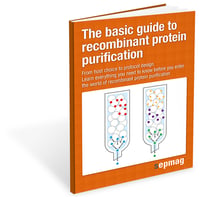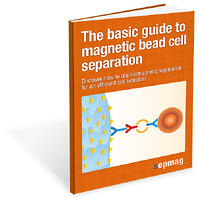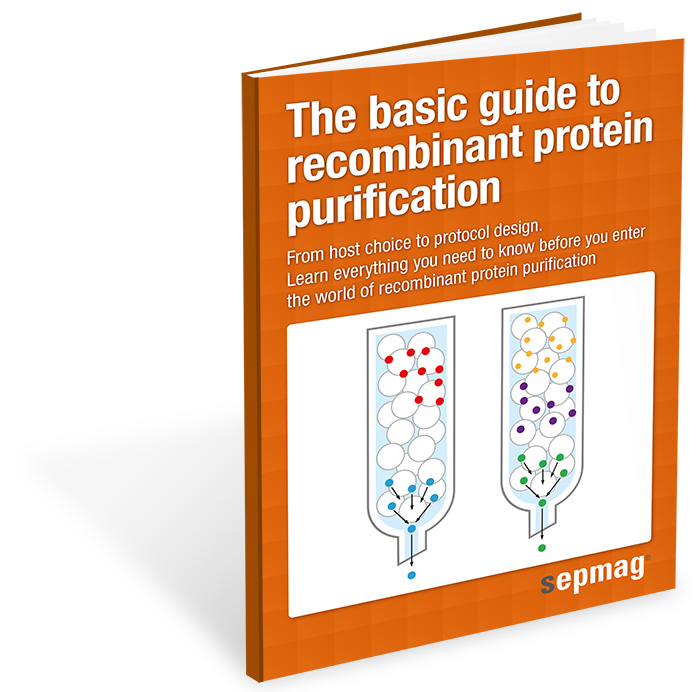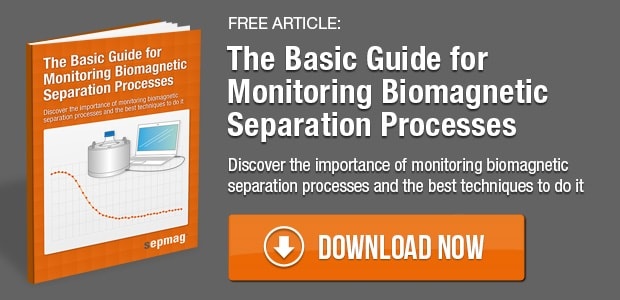There is a continuous demand for the separation ofbiomolecules for downstream processes which require a system that can operate with high degrees of reproducibility in lesser time and efforts. The biomagnetic separation (BMS), the action of a magnetic force on particles present in a solution, has highly benefited the field of biomedical and pharmaceutical sciences with its easy automation and good results. Some of its major in vitro applications, providing fewer loads of laboratory experimentation, and showing better output are as follows:
Protein Purification:
The selected protein/peptides can be purified and concentrated using the immobilised ma gnetic beads. The conventional methods of protein purification is quite tedious; however several steps which are omitted when separation is done using magnetic beads. It is even favourable to purify the desired peptide from the thick or diluted sample. It is an excellent method as large protein complexes and peptides, vulnerable to breakage by traditional column chromatography techniques remain intact during the magnetic separation procedure.
gnetic beads. The conventional methods of protein purification is quite tedious; however several steps which are omitted when separation is done using magnetic beads. It is even favourable to purify the desired peptide from the thick or diluted sample. It is an excellent method as large protein complexes and peptides, vulnerable to breakage by traditional column chromatography techniques remain intact during the magnetic separation procedure.
If you want to know more about protein purification you can check this free ebook.
Immuno and Molecular Diagnostics:
An immunoassay approach was developed which involves the specific binding of an antibody to its antigen, where a magnetic label/bead is conjugated either with an antigen or a protein antibody with affinity to the target. The signal is analysed by an instrument, magnetometer, where signal is proportional to the quantity of an analyte present in the initial sample. Beads with immobilized ligands can also be used for the purification of monoclonal and polyclonal antibodies.
Nucleic Acids Capture:
The BMS technique is an effective tool to isolate and purify DNA and mRNA molecules from a mixed suspension, using silica magnetic beads. It aids in the separation of specific nucleic acid sequences when a complimentary strands from the sample get attached to the template bound to magnetic beads. It is always a better alternative than the elaborated techniques like PCR, thus giving impetus to further molecular biology research.
Cell Sorting:
Specific types of cells can be isolated from crude samples such as blood, tissue ho mogenates, stool, cultivation media, food, water and soil, and industrial by -products and many others. Permanent magnet beads and labels are used which interact with the cell surface via high-affinity ligands. They can be separated using magnetic field, once the target and affinity coating are bound.
mogenates, stool, cultivation media, food, water and soil, and industrial by -products and many others. Permanent magnet beads and labels are used which interact with the cell surface via high-affinity ligands. They can be separated using magnetic field, once the target and affinity coating are bound.
If you want to know more about cell sorting you can check this free ebook
Conclusion
Biomagnetic separation technique is a boon to biotechnology industry with its wide range of applications in clinical and pharmaceutical settings. Attributed to ease of operation and minimal loss, this technique has proved its time and cost effectiveness.
Related news
- Magneticbeads for sensitive detecting plant vacuolarprocessing enzyme activity
- Purification of pancreatic epithelial cells with magnetic beads
- Improved detection of Mycobacterium avium subsp. Paratuberculosis




